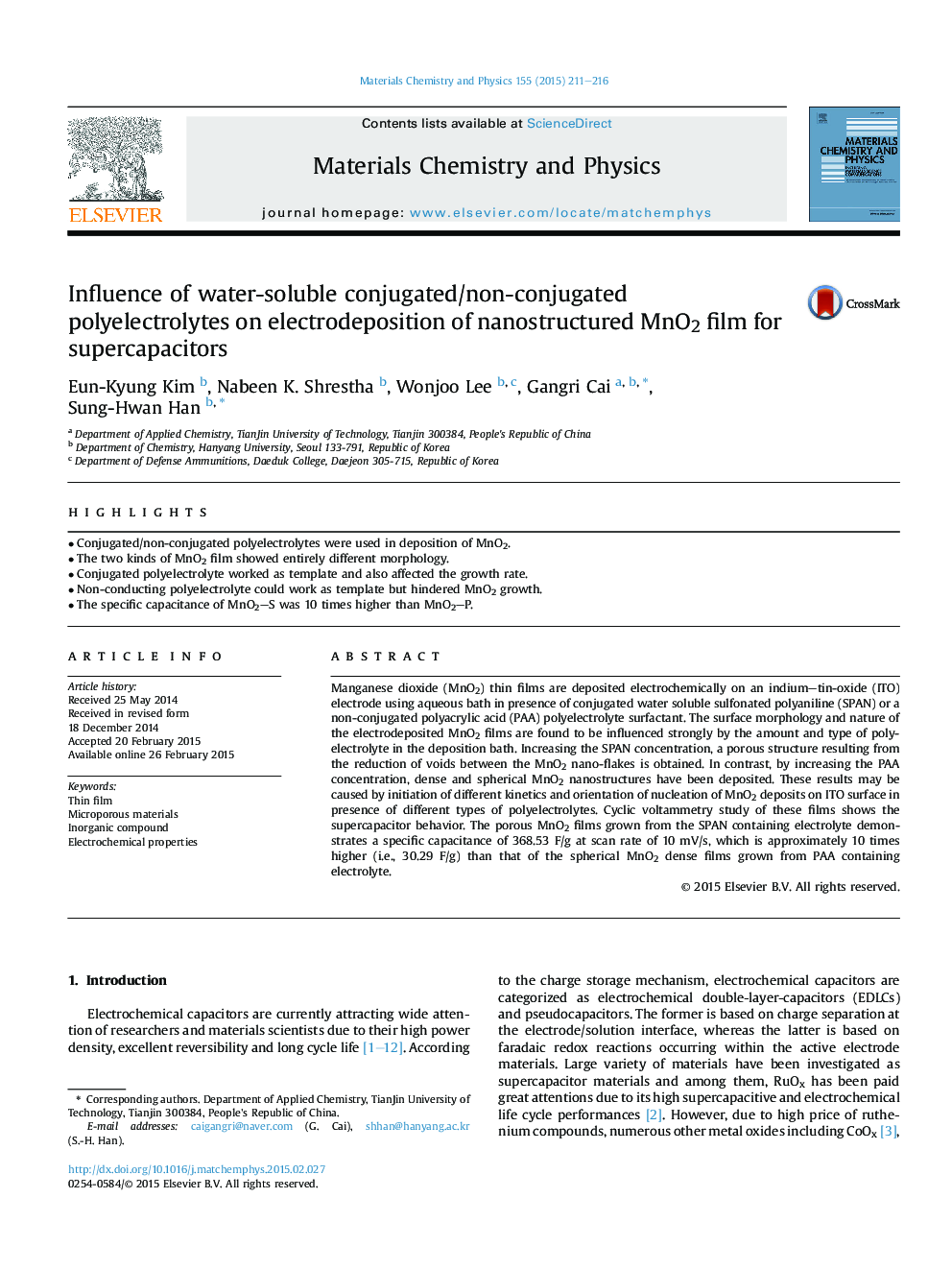| Article ID | Journal | Published Year | Pages | File Type |
|---|---|---|---|---|
| 7923294 | Materials Chemistry and Physics | 2015 | 6 Pages |
Abstract
Manganese dioxide (MnO2) thin films are deposited electrochemically on an indium-tin-oxide (ITO) electrode using aqueous bath in presence of conjugated water soluble sulfonated polyaniline (SPAN) or a non-conjugated polyacrylic acid (PAA) polyelectrolyte surfactant. The surface morphology and nature of the electrodeposited MnO2 films are found to be influenced strongly by the amount and type of polyelectrolyte in the deposition bath. Increasing the SPAN concentration, a porous structure resulting from the reduction of voids between the MnO2 nano-flakes is obtained. In contrast, by increasing the PAA concentration, dense and spherical MnO2 nanostructures have been deposited. These results may be caused by initiation of different kinetics and orientation of nucleation of MnO2 deposits on ITO surface in presence of different types of polyelectrolytes. Cyclic voltammetry study of these films shows the supercapacitor behavior. The porous MnO2 films grown from the SPAN containing electrolyte demonstrates a specific capacitance of 368.53Â F/g at scan rate of 10Â mV/s, which is approximately 10 times higher (i.e., 30.29Â F/g) than that of the spherical MnO2 dense films grown from PAA containing electrolyte.
Related Topics
Physical Sciences and Engineering
Materials Science
Electronic, Optical and Magnetic Materials
Authors
Eun-Kyung Kim, Nabeen K. Shrestha, Wonjoo Lee, Gangri Cai, Sung-Hwan Han,
